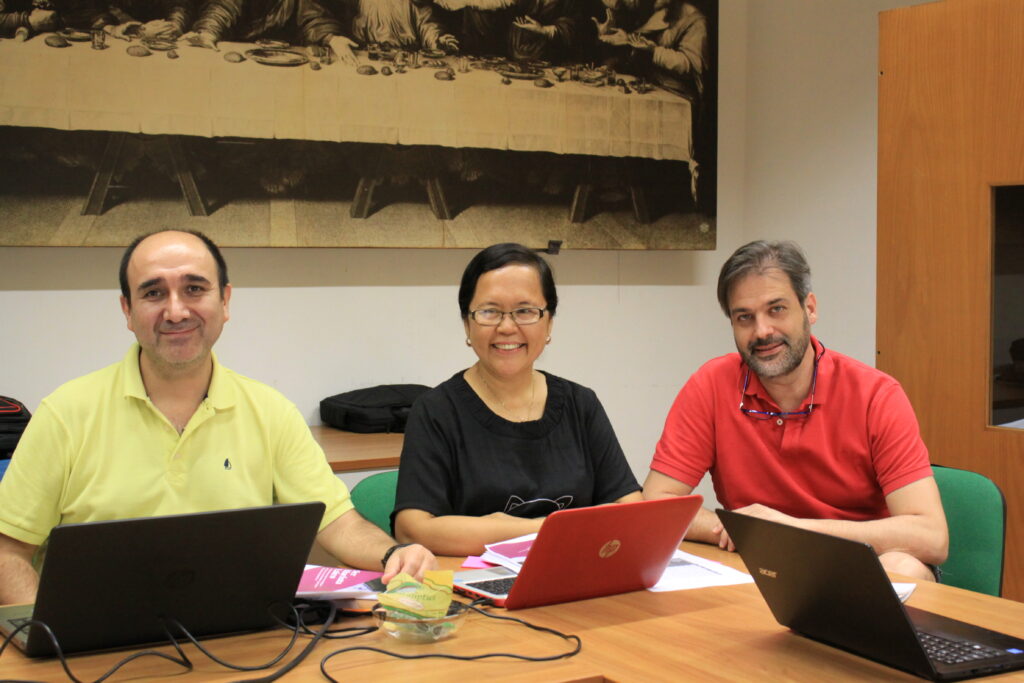Sharing 22 – The Lay Marist Vocation
PDF: English | Español | Français | Português
The bulletin “SHARING the lay Marist vocation” reaches its 22nd issue after more than two years of existence. From the Secretariat of the Laity we will be proposing, from now on, different reflections that can help all the lay Marists of the world to share together, to enlighten our vocational paths and to continue being “leaven” of the Kingdom of God in our world and in our Church. We will also share real experiences of lay Marists from different parts of the world, related to each theme of reflection.
In this issue we will reflect on the Synod of Synodality and what it implies for the Marist laity and the Global Charismatic Family. We will always find a simple guide with some questions that can help us to deepen personally, to share in the life of our groups, fraternities or lay communities, and to serve better in our society and our Church. In this issue, some of the people who have served the Secretariat of the Laity will be speaking in a special way (Br, Javier Espinosa, Agnes Reyes and Pep Buetas), and who have shared their time and work with the current director, Raúl Amaya. In December, Raúl ends his service to the Institute, after 6 years, as Director of the Secretariat. Thank you very much, Raúl, for your passion, for being a Marist of Champagnat and for all the good that you have encouraged during this time in the growth of the Marist laity!
From January, the Secretariat of Laity will be formed by Manu Gómez (Director), Ana Saborío ( Assistant Director) and Mark O’Farrell (Assistant Director), with the support of the Extended Secretariat and the liaison councillors, Brothers João Carlos do Prado and Sylvain Ramandimbiarisoa.
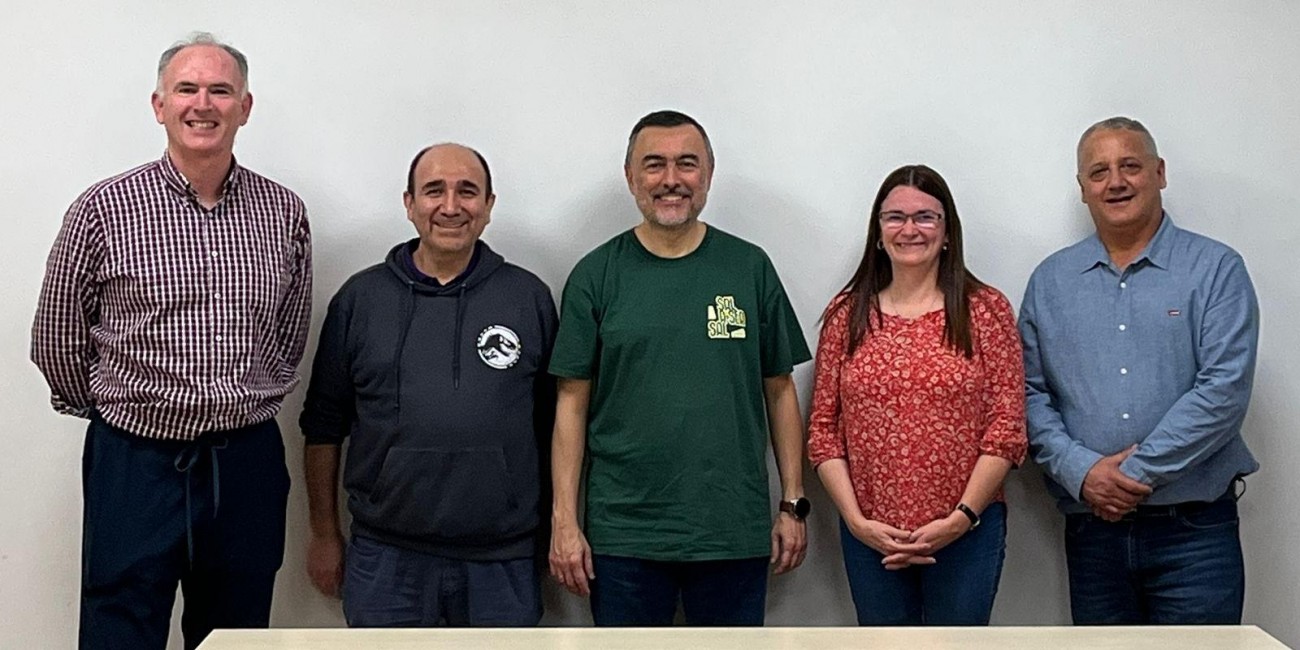
OPPORTUNITIES AND CHALLENGES OF SYNODALITY FOR
MARIST LAYPEOPLE AND OUR GLOBAL CHARISMATIC FAMILY
The Synod and synodality
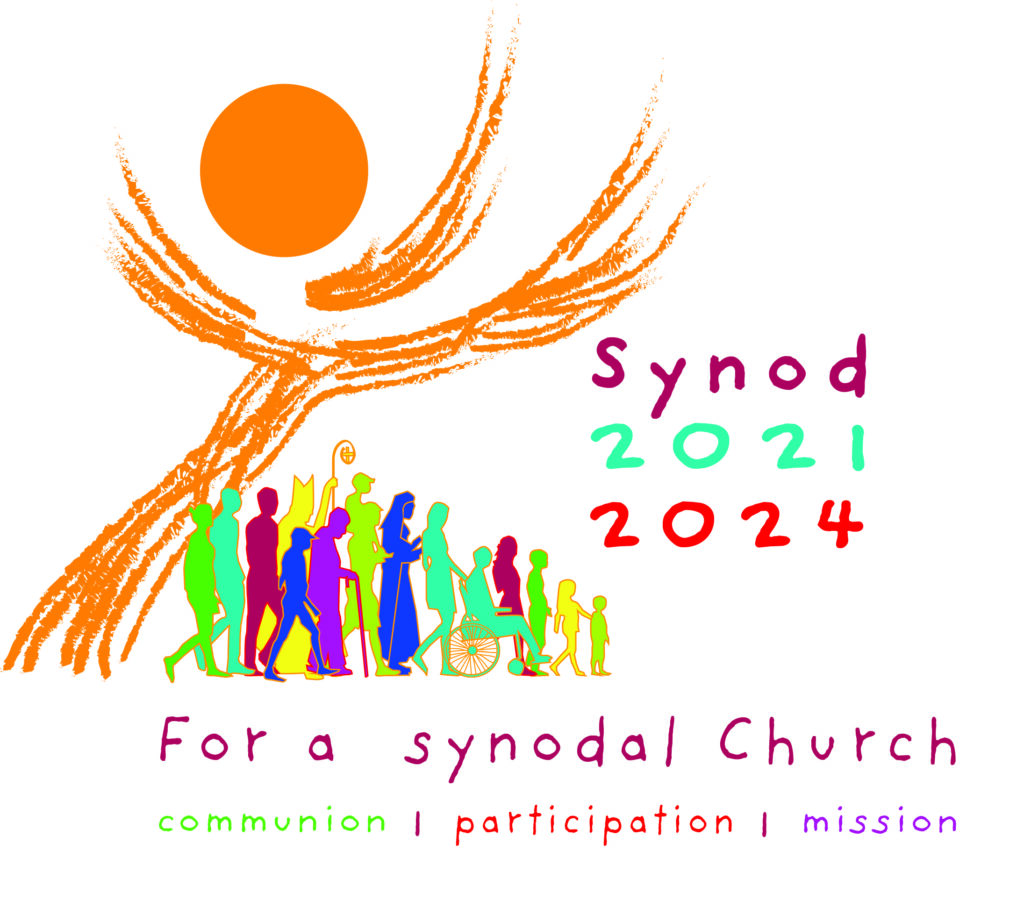
During the month of October 2023, a Synodal Assembly was held in Rome, presided over by Pope Francis, bringing together bishops, priests, religious, lay men and women. They came from all parts of the world, reflecting the diversity of ways the faith and the Gospel are inculturated in all cultures. This assembly, in the context of the so-called ‘whole world’ stage, is part of a process that began in 2021 and will conclude in 2024 with the second session of the assembly.
The topic for reflection on this journey or SYNOD is becoming more and more familiar to us: SYNODALITY. These two words, synod and synodality, are beginning to form part of the vocabulary of many People of God, but there is still some way to go to understand their full meaning and scope, beyond theoretical ideas and theological explanations.
To enlighten our thoughts, we begin by borrowing the words of the International Theological Commission, which can help us to better understand the meaning and sense of the two words: “Synod” is an ancient and venerable word in the Tradition of the Church, whose meaning draws on the deepest themes of Revelation. Composed of a preposition συν (with) and the noun όδός (path), it indicates the path along which the People of God walk together. Equally, it refers to the Lord Jesus, who presents Himself as “the way, the truth and the life” (Jn 14,6), and to the fact that Christians, His followers, were originally called “followers of the Way”. (Synodality in the life and mission of the church)
“Synodality is the specific way of the Church to be and act as the People of God, which reveals and gives substance to her being as communion when all her members journey together, gather in assembly and take an active part in her evangelising mission” (International Theological Commission. Synodality in the life and mission of the Church, 6.)
In 2015, during the commemoration of the 50th anniversary of holding Synods of Bishops, Pope Francis said: “It is precisely this path of synodality which God expects of the Church of the third millennium. What the Lord is asking of us is already in some sense present in the very word “synod”. Journeying together — laity, pastors, the Bishop of Rome — is an easy concept to put into words, but not so easy to put into practice.” (Address of his holiness Pope Francis).
Back in 2021 Francis himself launched this Synod on synodality, a journey for all the baptised, wherever in the Church they live and carry out their life and mission. We were called to embark on this journey in order to explore together and propose avenues of commitment around the theme “FOR A SYNODAL CHURCH: COMMUNION, PARTICIPATION, MISSION“.
In the first phases of the Synod, the journey started in the local and continental churches. The intention was to initiate a process of mutual listening, involving the whole People of God. To better understand this process, we will listen again to the Pope’s words at the opening of the synodal assembly on 4 October 2023:
“I like to say that the Synod is not a parliament; it is something else. The Synod is not a gathering among friends to resolve some current problems or to give opinions; it is something else. Let us not forget, brothers and sisters, that we are not the protagonist of the Synod: it is the Holy Spirit. If the Spirit is in our midst to guide us, it will be a good Synod. If there are other ways of going about things, based on human, personal or ideological interests, it will not be a Synod, but more of a parliamentary meeting, which is another thing. A Synod is a journey that the Holy Spirit makes” (Pope Francis during the opening of the Synod).
For a synodal church
Among the contributions contained in the Working Document Instrumentum Laboris for the first session of the synodal assembly last October, one of the experiences most highlighted by participants around the world was that “the synodal process offers an opportunity for a faith encounter that strengthens our relationship with the Lord, fraternity between people and love for the Church”. In the same way, it is clear, according to Pope Francis, that “the protagonist of the Synod is the Holy Spirit”.
Characteristic Signs of a synodal Church
From this evolving understanding of what a synodal Church means, the Working Document highlights some characteristic signs that help us to reflect and continue on our journey:
- A synodal Church is founded on the recognition of a common dignity deriving from Baptism, which makes all who receive it sons and daughters of God, members of the family of God, and therefore brothers and sisters in Christ, inhabited by the one Spirit and sent to fulfil a common mission. A synodal Church cannot be understood other than within the horizon of communion, which is always also a mission to proclaim and incarnate the Gospel in every dimension of human existence. From this arises the desire for an increasingly synodal Church also in its various institutions, structures and procedures.
- A synodal church is a listening church: to the Spirit, to the Word, to the events of history, to each other as individuals and among ecclesial communities. A Church that desires to be humble, and knows that it must ask forgiveness and has much to learn. A Church of encounter and dialogue.
- A Church that is not afraid of the variety it bears, but values it without forcing it into uniformity. A Church that promotes the passage from “I” to “we”. A Church that is open, welcoming and embraces all.
- A synodal Church has the ability to manage tensions without being crushed by them. Trying to walk together also brings us into contact with the healthy restlessness of incompleteness.
- A synodal Church is a discerning Church able to take prophetic decisions, the fruit of the Spirit’s guidance.
A way forward for a Synodal Church: conversations in the Spirit
Possibly one of the most powerful signs of the whole synodal process has been the method they adopted called “Conversation in the Spirit” as a dynamic of discernment.
As the Working Document explains, “In its etymological sense, the term “conversation” does not indicate a generic exchange of ideas, but a dynamic in which the word spoken and heard generates familiarity, enabling the participants to draw closer to one another. The specification “in the Spirit” identifies the authentic protagonist: the desire of those conversing tends towards listening to His voice, which in prayer opens itself to the free action of the One who, like the wind, blows where He wills (cf. Jn 3:8).”
This discernment process, which has been assisted in a concrete way by having the participants of the assembly in the synod hall arranged around round tables, promotes a way of expressing fraternity, making possible deep listening, shared prayer, horizontal relationships and the discovery of the presence of the Spirit in the midst of every conversation. In short, it is already a foretaste of what the synodal Church we want to build could be like. Following the example of the conversation that the Risen Lord had during his walk with the disciples on the road to Emmaus, this “conversation in the Spirit” builds communion and brings missionary dynamism.
Communion, mission and participation: the key words of the Synod
Up or down, inside or outside, black or white, immanence or transcendence, being or doing, body or soul, earthly or spiritual… Too often, we tend to approach reality and try to understand it in a dualistic way, with a fragmented vision that prevents us from connecting and integrating different perspectives that would allow us to develop a more global and unified view of reality, and so discover intertwined aspects that mutually inform and enrich each other.
We are being invited to have just such an integrating vision by considering the three priority themes for the synodal Church: communion, mission and participation.
Regarding the first two themes, Pope John Paul II had this to say in Christifideles Laici 32: “Communion and mission are profoundly connected with each other, they interpenetrate and mutually imply each other, to the point that communion represents both the source and the fruit of mission: communion gives rise to mission and mission is accomplished in communion. It is always the one and the same Spirit who calls together and unifies the Church and sends her to preach the Gospel “to the ends of the earth” (Acts 1:8).” The Working Document says that participation, the third of the themes, “can only be understood in relationship with communion and mission, and for this reason, it can only be addressed after the other two.”
These three themes have permeated the entire synodal reflection from its diocesan phase to the international phase in which we now find ourselves. As a result of this reflection, major questions have arisen in relation to each theme, accompanied by other more concrete questions which we can find in the Working Document, and which the participants in the synodal assembly have been attempting to answer using the process of conversations in the Spirit. These basic questions were as follows:
- A communion that radiates: How can we be more fully a sign and instrument of union with God and of the unity of all humanity?
- Co-responsibility in Mission: How can we better share gifts and tasks in the service of the Gospel?
- Participation, governance and authority: What processes, structures and institutions are needed in a missionary synodal Church?
In both the Letter to the People of God and the Synthesis Report: A Synodal Church in Mission we can get a deeper insight into the main conclusions of the Synodal Assembly and how it intends to progress towards the second session of the Synodal Assembly in 2024.
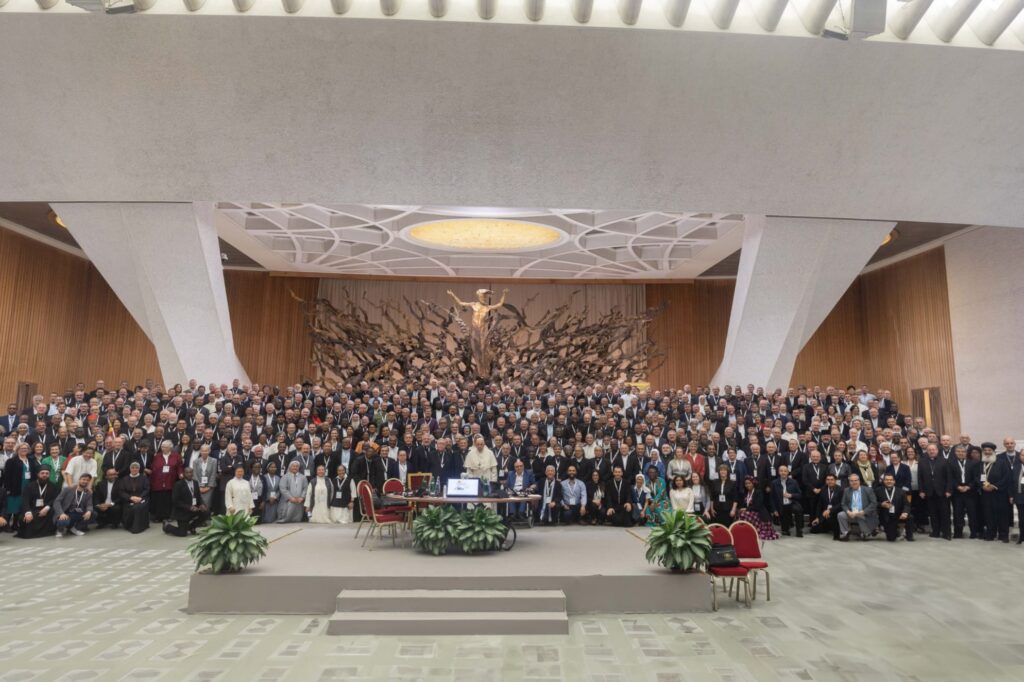
Marist laypeople and our charismatic family in synodality
In nature we find structures that, in mathematics, physics or biology, are called fractals. A fractal is a geometric object characterised by a structure that is repeated with different dimensions. In a sense, it is an endless pattern. An example of such a structure could be broccoli, which appears to be made up of several mini broccoli. If we look at a piece of broccoli, we discover that each small portion looks like a small-scale replica of the whole piece.
One might ask why we are bringing up fractals in a reflection on synodality. We will try to explain why and, above all, we will provoke reflection on each of these themes from the perspective of fractals.
The path that Pope Francis has invited all the baptised to follow in this Synod on Synodality runs the risk of remaining a reflection of ‘Vatican domains’ or ‘bishops’ conferences’.
Let us recall the fundamental question that appeared at the beginning of the preparatory document for the Synod back in 2021: “How is this “journey together” that allows the Church to proclaim the Gospel in fidelity to the mission entrusted to her happening today at various levels (from local to universal) and what steps is the Spirit inviting us to take in order to grow as a synodal Church?”
The synodal process is, therefore, a journey that requires reflection, conversion and the implementation of attitudes and actions that lead the Church to live communion, to open itself to mission and to participation. And this ‘journey together’ that is the Synod must be carried out not only at the level of the Universal Church but also at the level of the local churches, parishes, movements and small community cells in which each baptised person shares, lives and celebrates his or her faith in the Risen Lord.
Comparing the Church to the symbol of a fractal, to which we alluded earlier, to the extent that each small community or local church experiences and develops processes of communion, mission and participation in a synodal style, it will be replicating, on a reduced scale, what the synodal Church is meant to be on a universal level.
What has been said above applies to our being Church in the framework of our Charismatic Family. If we think about our being Marists of Champagnat, about how we live or intend to engage in communion, mission and participation, it would be good to ask ourselves if this way of living is helpful or not in building a synodal Church.
As regards how we understand and put into practice the experience of communion, we can find inspiration in some documents of the Church and of the Institute:
- “Only from inside the Church’s mystery of communion is the “identity” of the lay faithful made known, and their fundamental dignity revealed. Only within the context of this dignity can their vocation and mission in the Church and in the world be defined.” (Christifideles Laici 8)
- “The simple table of the First Brothers keeps us in communion with the Church, the People of God, and with other Christian Churches, brothers and sisters in faith, with whom we follow the path towards Christ. Also, it unites us to other people, non-believers or from other religions, with who we share a common commitment in building a fairer world.” (Gathered Around the Same Table, 82)
- “Driven by the Spirit, we are helping a new model of the Church to be born, one based on the equal dignity of all Christian vocations and in the image of the Church as the People of God in communion.” (Gathered Around the Same Table, 144)
- The document “Being a Lay Marist: Guidelines to accompany people in their vocational growth and offer formation pathways”, states that, “the vocational journey of Marist laypeople helps to deepen communion between brothers and lay.” Some aspects of what this experience of communion might be like are highlighted: a communion built from the same following of Jesus, from the same charism, from complementarity, which enhances the vitality of the charism, which organises joint formation programmes and which inspires service in our contemporary world.
Equally, we can recall what we are told in relation to the experience of mission:
- “The lay life originates, as does all Christian vocation, from the response to our encounter with God, who loves us infinitely. It is the fruit of our baptism which directs all of us to that unique Christian mission: to give witness of the Kingdom of God in this world.” (Gathered Around the Same Table, 5)
- “The table of La Valla and the house of L’Hermitage are symbols that embody the gist of God passed on to us by Marcellin and they continue to be for us a source of inspiration for recreating the Marist charism in our day. Sharing bread and building a home, we feel that Marcellin is inviting us today to be a community for the mission.” (Gathered Around the Same Table, 31)
- “The Church recognises that the insight of Saint Marcellin continues to be alive in us today and that he is a gift of God for the world. The Marist mission is called upon to multiply itself until, in all dioceses of the world, the children and young people experience God’s tenderness. We Lay Marists believe that God calls us to carry on this insight in history as followers of Christ in the style of Champagnat.” (Gathered Around the Same Table, 33)
As for the third dimension of participation, the following was shared by lay men and women from Argentina in their contribution to ‘Gathered around the same table’:
“We know that there is a long way to go, that there are still goals to reach in our quest for autonomy and complementarity. To participate is to be able: to be able to say, to be able to do, to be able to decide, to be able to be and to be with others, to be able to be worthy sons and daughters of God as we would like to be, to be able to know, and to be able to enjoy the experience”.
As lay Marists of Champagnat we have already been on a vital journey as an Institute over several decades. We have supportive documents that enlighten us on this journey, and we are sensing new ways of incarnating the Marist charism in our world and in the Church. We are being called, as members of this synodal Church, to reveal the Marian face of the Christian community. To what extent are we convinced that, “Driven by the Spirit, we are helping a new model of the Church to be born, one based on the equal dignity of all Christian vocations and in the image of the Church as the People of God in communion“? (Gathered around the same table 144)?
Let us make our own the words of Pope Francis in his address at the beginning of the Synod devoted to young people in 2018: “The purpose of this synod is not to produce documents but to plant dreams, draw forth prophecies and visions, allow hope to flourish, inspire trust, bind up wounds, weave together relationships, awaken a dawn of hope, learn from one another, and create a bright resourcefulness that will enlighten minds, warm hearts, give strength to our hands…”

For personal reflection, in groups, fraternities, lay communities…
This insight into the synodal process in which we are currently engaged as a Church can help us to hold discussions in our groups, fraternities or lay communities, adopting the methodology of “conversations in the Spirit” that has guided the whole process of reflection and work of the Synod.
We suggest some questions for you to answer on a personal level:
- At the level of the whole CHURCH:
- What is your understanding and experience of a Synodal Church?
- What opportunities do you see in this synodal journey we are experiencing in the Church?
- What are the main challenges for the Church to be truly synodal?
Within our CHARISMATIC FAMILY as Marists of Champagnat:
- To what extent do you think our Charismatic Family already has the features of a synodal Church?
- What opportunities do you see in how we are trying to live communion, mission and participation?
- What are the main challenges we face in living communion, mission and participation more fully?
In your group, fraternity or lay community, you can discuss your thoughts along the lines of the conversations in the Spirit. You are also invited to reframe these questions based on the real life situations of each group, fraternity or lay community.
Raúl Amaya, director of the Secretariat of Laity (2018 – 2023)
Intuiting the synodal path
Br. Javier Espinosa – Province of Central America, Guatemala
Director of the Secretariat of Laity (2011-2017)

In 2003, a “lay organizational reference” was created in the Institute, under the direction of a brother. Over the course of fifteen years, brothers Paulo Celso, Michael F., Pau and Javier have been responsible for the animation of this entity, which has had different names such as the Commission of the Laity, the Consultative Group, and finally, “Secretariat of the Laymen”, in 2006. It was in 2017 when a layman was appointed as director for the first time, Raúl Amaya, who has just finished his period in that mission.
The process of change in lay animation had been brewing for years with the reflections of the General Chapters, the messages of the Superiors General, and documents such as “Around the same table.” Likewise, lay commissions, lay assemblies, and formation processes for lay people in the provinces were appearing. Progressively, the brothers delegated the coordination of all these proposals to lay hands. That is why, in 2017, it seemed so normal to us in the Secretariat to promote the appointment of a lay director. The decision carried with it the conviction that the animation of lay processes should be promoted by the lay people themselves, and that they should create better conditions of autonomy, maturity, and organization.
I think that the journey experienced in the Institute has a lot of synodal path. In so many ways we have been expressing that we must walk together, listen to each other, create communion and participation, unite in the common mission. The gesture of recognizing a layman as Director of the Secretariat meant recognizing the lay force in the Church, where the entire community participates in ecclesial life, which is missionary, servant and ministerial. It meant a way to reverse the pyramid scheme with another community one. Affirmation that lay people and brothers share the same faith, the same Lord, the same gospel, the same baptism, the same mission, the same charisma.
The bet we have been making is a bet of communion. We all sat, as equals, around the same round table. We inspire each other to grow in fidelity to the charism. We enrich each other. We complement each other. And this communion is the Marist future. Without dependencies or paternalisms, we assume “the challenge of helping to birth the dawn of a new Marist life and strengthening what exists, making it more creative, faithful and dynamic”, which is expressed “Around the same table”. This very synodal dimension forms the vision that the Secretariat had when thinking of Raúl as a Marist layman, married, with two children, and with a clear charismatic connection. Finally, I recover another key to reading the lay process that determined the change of the Director of the Secretariat. It meant for us (the brothers) a way out, a path of conversion. It is not that the laity collaborate with us or that they integrate into our charism. We put ourselves at their service in the common mission of the Church. The path of communion that we have undertaken relocates us in a different way in the Church, moving from superiority to fraternity, from substitution to collaboration, from distance to closeness, from being owners to being servants. Without a doubt, it paints an image of Marist identity that is much more radical and communal, more demanding, and prophetic. The protagonism becomes the ferment that is put in the dough, in the apron and basin to wash the feet. Continuing this path with Manu, the new Director of the Secretariat, is continuing with a look of hope.
Dedication for the future of the Marist charism
Pep Buetas – Province of l’Hermitage
Assistant Director of the Secretariat of Laity (2014-2020)
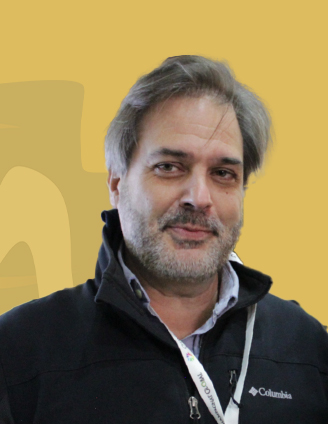
I met Raúl when I participated – for the first time – in an international meeting, specifically on the lay Marist path, in 2011. He came to give us his testimony, and to participate as a member of the expanded Secretariat of lay people in a meeting that was held in El Escorial for the regions of Africa and Europe. It would be later, when I joined that secretariat, that we began to know each other more and better; to share dreams and proposals to achieve them; to laugh at a thousand jokes; to know more deeply the Marist reality of the world, especially the lay reality; to talk about our respective families; to share the cultural and political realities of our countries; to discover with delicacy and joy the path that God is opening in the Marist family and in our own lives. Raúl has led the Secretariat in a time of transition: he has been the first lay person to assume its leadership with the support of the current government of the Institute, which was also beginning its journey at that time. In this time, he has proven to be a person who listens and knows how to contribute his wisdom. He has shown that It is by serving that you lead with authenticity. What impresses me about Raúl is his deep vision, his simplicity, his clarity, and his humility. His affectionate gestures, full of family spirit. his pleasure in encounters, music, conversation and clean laughter. His cultural and social sensitivity.
His determination and courage to follow what he considers a call to give his time and energy: his dedication to the future of the Marist charism, of the Church and, above all, of those who are the recipients of so much love. His ability to give importance to what is essential and his ability to prioritize what is important. Walking with him for seven years has been like walking with a brother. Thanks Raul!
A leader in the Marist world
Agnes Segovia Reyes – Province of East Asia, Philippines
Assistant Director of the Secretariat of Laity (2017-2022)

I have worked with Raul for years since our time on the Extended Secretariat and followed by those years with him as the Director. We journeyed together in the making of visions and charting directions that matter most to the Secretariat of Laity. My interactions with him have impacted in me a deep sense of appreciation for the kind of leadership Raul exemplified. He is calm, an attentive listener, and he has clarity of decisions in moments when deliberations get tough. Being “cool under pressure” is a trademark of his which I admire in his way of leading us.
As a leader in the Marist world, he is clear of his life’s priority: his family. I cannot forget how he, for months, had given his energies in the preparation of the details of the International Forum on the Vocation of Marist Laity only to opt not to attend that important event because his family needs his presence the most. It was a tough decision for a leader, surely. Raul’s capacity to take options for his family had shown me the integrity of a true Marist lay leader, that is, choosing what was most important in that circumstance. Raul won my admiration because he showed me that as lay, we must be rooted to the vocation we are called for. In Raul’s case, that of being a lay family man. Raul, my appreciation to you as our lay leader for your years of service to the Institute. Thank you for leading our journey in helping us find clarity to our calling as lay Marist. How you lived your life and the exercise of your leadership had, indeed, shown us the way…
